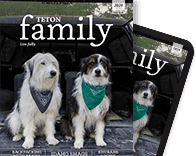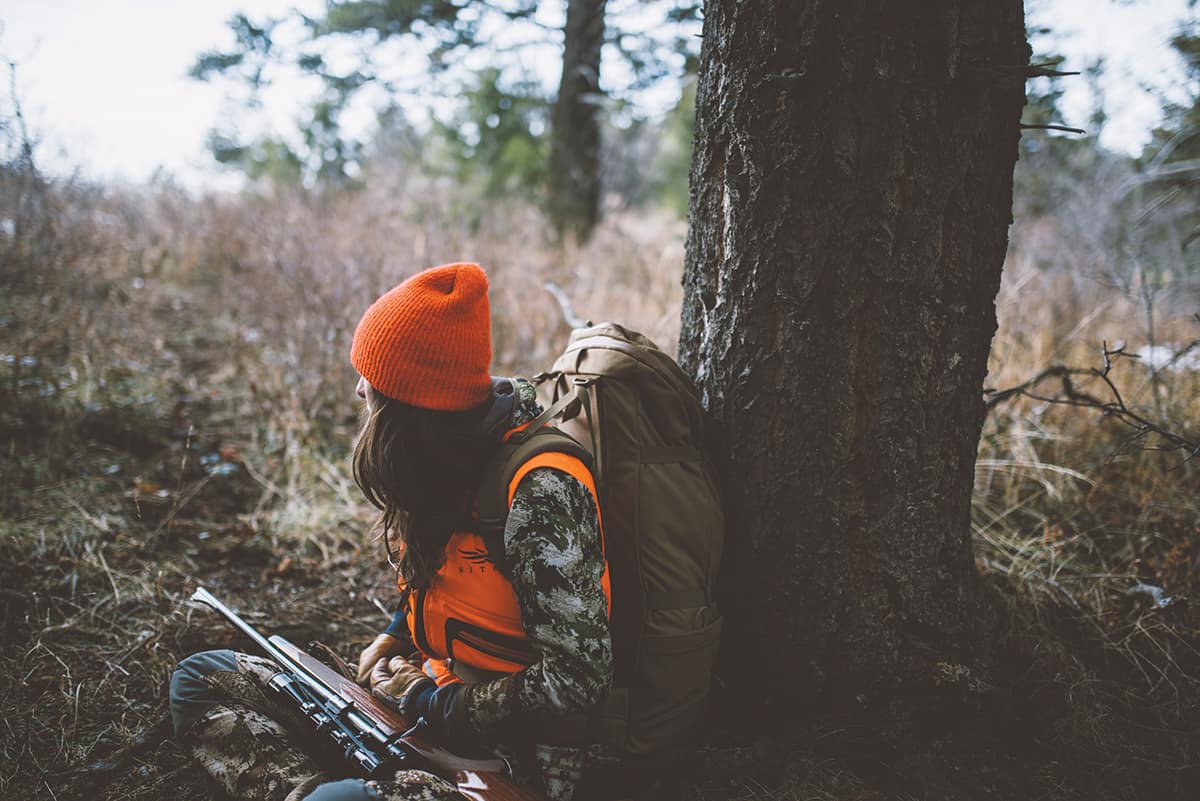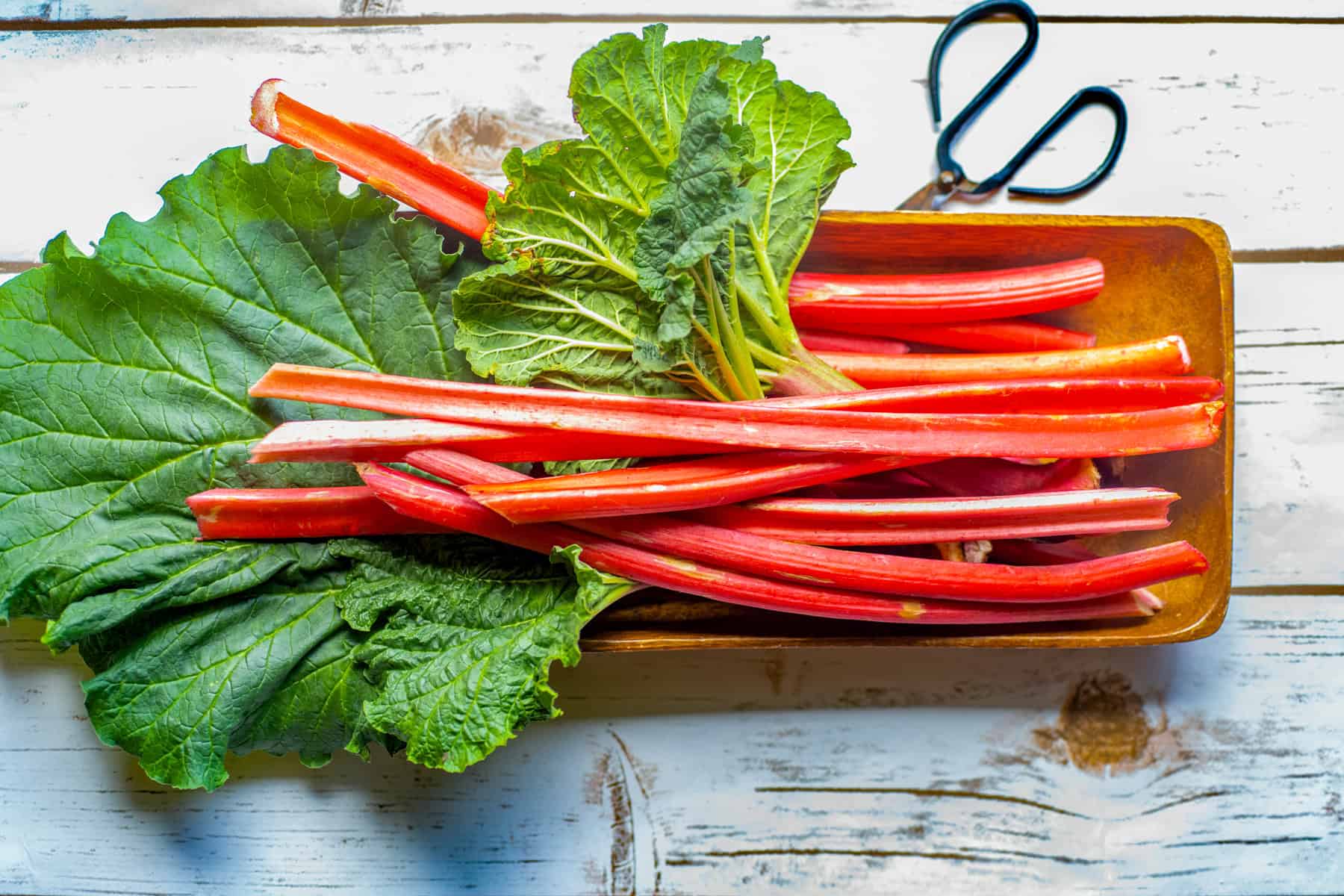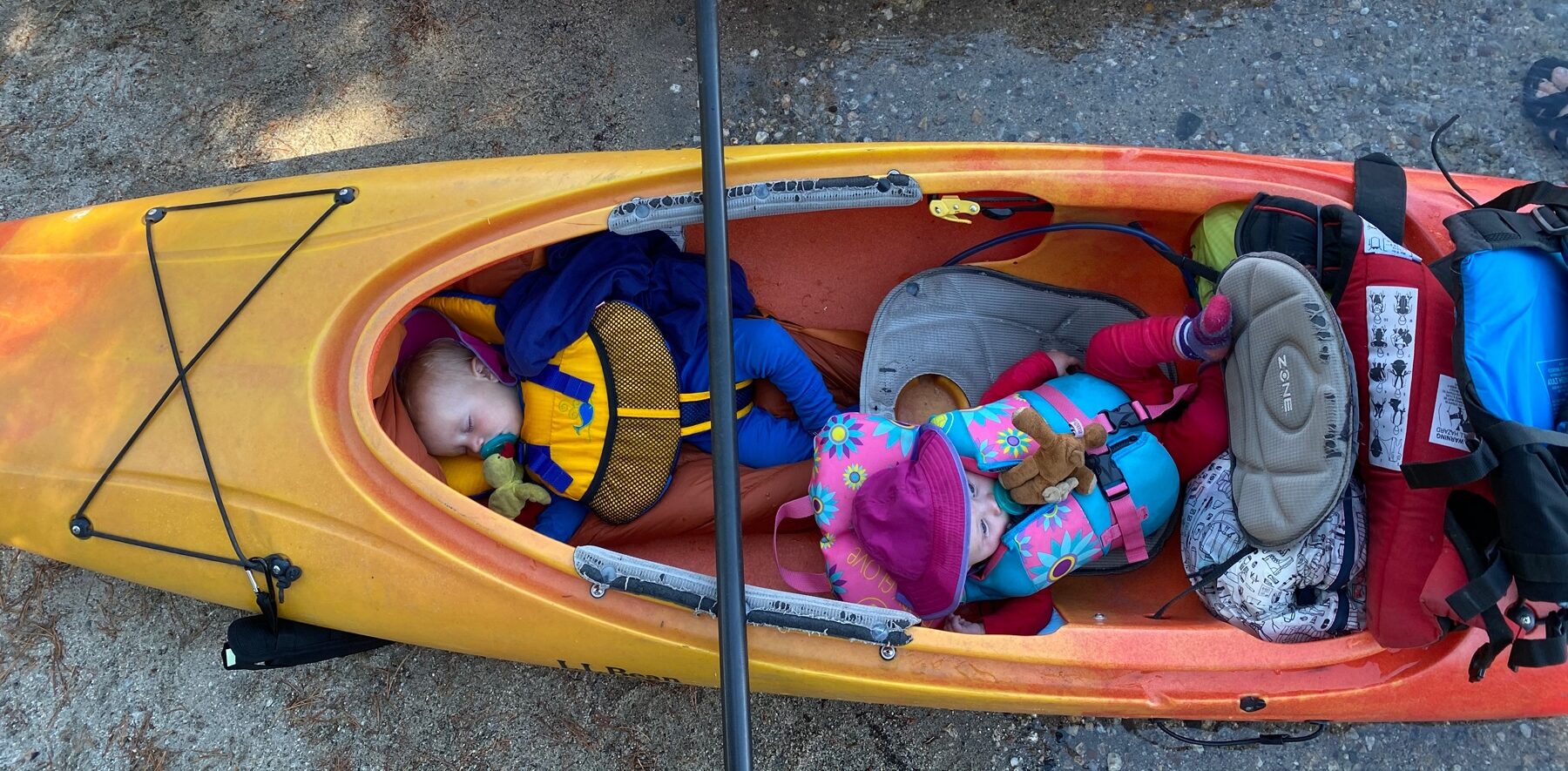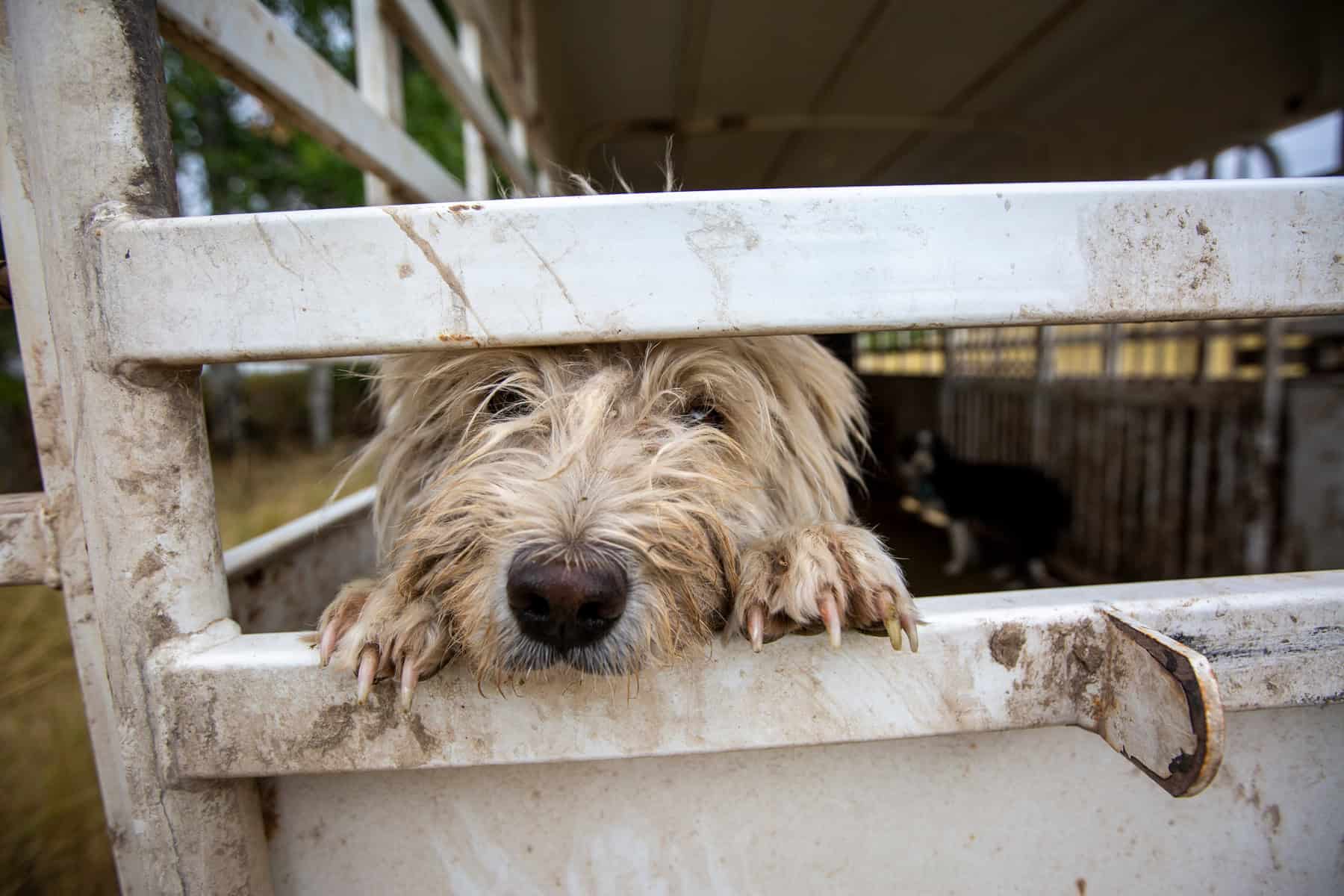By Sue Muncaster // Photography by Camrin Dengel
—
“Theeeeere she is!” my nine-year old son, Nico, half-whispered, half-screeched.
He was dressed head to toe in his Halloween ghillie suit on top of a sage-covered hill somewhere up one of the many forks of Fall Creek, scaling the far ridgelines for elk through binoculars.
“C’mon Mom, let’s go get her.”
“Sorry buddy,” I had to break it to him. “It’s just too late, and it’s too far for me to shoot.”
“That’s okay, Mom,” he said, holding my hand and snuggling closer as the alpenglow brightened into a deep pink over the Tetons. “I’m just happy to be here with you. Thanks for bringing me.”
I grew up in Colorado. My dad was a passionate hunter who rarely made it to my birthday parties because my October birthday fell on opening day of elk season. I’d sneak my neighborhood friends into the garage to ogle the elk carcass inevitably hanging from the rafters each fall. (We were so grossed out!) When I was sixteen, I begged to go hunting with him. My dad told me, for the first and only time in my life, “No, it is not for girls.”
It wasn’t until I was in my late forties that a girlfriend, who found a rifle on the wall of her house during a remodel, asked me if I wanted to learn to hunt. At the time, I was deeply inspired by the slow food movement and the lure of local, organic game meat. So, a friend loaned me his grandpa’s heirloom .270 Winchester rifle, and a few other friends taught me how to clean my gun and gave me some shooting tips. I took my hunter safety course online, and then—the real key to any sense of comfort—I attended a Becoming an Outdoors Woman (BOW) weekend, where I had ample opportunity to practice shooting with professional instructors. Under the direction of backwoods guru Kevin Taylor, I helped gut, skin, and quarter a local cow during a field-dressing class with Full Circle Education. And, as a reward for helping pack out an elk quarter from deep in the Palisades, I spent a day helping my neighbor butcher and grind meat.
Finally, I was ready to give it a go.
On one of my first solo outings, I had the terrifying experience of sitting in a hunting stand as the sky darkened while both a bull moose and a porcupine lingered below me. My hunting experience wasn’t void of mistakes, either. I scared away an easy shot while loading a bullet as the fog lifted from a meadow during the early morning hours. And, I accidentally triggered my bear spray while setting down my pack. (This happened multiple times!) Finally, I got my van stuck in a foot of snow that fell while I was scouting.
After my second hunting season, and noting my seriousness, my dad made up for his earlier blunder by buying me a reliable rifle and booking myself, my sister, and a nephew a week-long trip with an outfitter in the Elk Mountains near Gunnison, Colorado. It was there I had my first success—a six-point bull elk.
In seven seasons, I’ve only harvested two elk (the second during the end of the season on the Elk Refuge), but my enthusiasm hasn’t waned. While I sometimes go it alone, most often my hunting days involve multiple generations. My 84-year-old dad (now a Wyoming resident) loves the epic drives into the backcountry. He hangs out near the car with his rifle, a bugle, binoculars, and a book, while myself and my son, or my sister, hike the high ridges and circle back down to him, all of us full of stories to share on the long ride home.
The biggest barriers to entry for new hunters, especially adults, is finding someone to teach them the ropes when they aren’t lucky enough to learn from family members. In retrospect, there’s something to be said for learning by doing, but I could have used a good local primer on big game rifle hunting to shorten my learning curve.
Rifles and Optics
What does a beginner hunter really need?
Alan Brumsted, a local hunter safety instructor who works at JD High Country Outfitters says, “Like ski equipment, there’s a wide range of choices and prices, but the minimum requirement is investing in a good rifle that fits your frame, takes the appropriate cartridge for the game you want to hunt, and has manageable recoil.” After that, “buy the best scope you can afford and the best binoculars you can afford because you should never use your scope to scan for animals, or you’ll be pointing your gun all over the place.” All said and done, approximately $1,000 should get you a decent set up.
Ammunition
Traditional lead bullets are designed to fragment into over 100 pieces upon impact. Fragments left behind in gut piles are easily picked up by scavengers. The Teton Raptor Center admits, on average, fifteen patients per year with detectable levels of lead in their blood, including eagles, owls, hawks, falcons, and vultures. Lead-poisoned raptors exhibit neurological symptoms, such as a loss of coordination and the inability to stand. This increases the chances of collisions, leading to head trauma or broken bones.
Non-lead (copper or copper alloy) bullets are accurate alternatives that do not fragment, but rather expand up to twice their size. They are mandated in Grand Teton National Park and encouraged on the Elk Refuge. When asked why everyone doesn’t use them, Brumsted pointed to higher cost and people’s habits (people get used to one brand they have used for years). To address the cost, Brumsted suggests using cheaper bullets to practice, and then load your gun with the ammunition you plan to use before you hunt.
Education
• For Kids
The best place to start is with the Teton County (Wyoming and Idaho) 4H Clubs. Both offer programs in shooting sports (rifle, shotgun, and archery) for ages eight and up. wyoextension.org/tetoncounty/4h-youth-development; uidaho.edu/extension/county/teton/4-h
• For All Ages
To get a license, hunter education classes are required unless you are over the age of 60. You can take a traditional class or attend an online course with an in-person field day. They fill up fast, so register in the winter for the following year. While you can take the course at any age, the minimum age for hunting big game in Wyoming is 12, and in Idaho, it’s 10. hunter-ed.com
• For Women
Becoming an Outdoors Woman (BOW) offers an affordable June weekend workshop, hosted by the Wyoming Game and Fish Department, that teaches hunting and other outdoor skills (like orienteering, archery, and canoeing). In partnership with the First Hunt Foundation, a September workshop called Beyond BOW focuses specifically on hunting ethics, firearms, archery, gun cleaning and optics, and it offers a simulated hunt. wgfd.wyo.gov/education/becoming-an-outdoors-woman
Shooting
“The most common mistake for new hunters is they don’t put the time into practicing and building confidence before going into the field,” says Fred Williams, Wyoming director of the First Hunt Foundation. Frequent reasons for misses include unproperly sighted scopes, nervousness (aka, “buck fever”), ammunition, insufficient practice, and gun or scope unfamiliarity.
The Jackson Hole Gun Club, located off Highway 89 between Jackson and Hoback Junction offers a membership, which requires an orientation class, and gets you a code to the gate and access to rifle, pistol, archery, and shotgun skeet and trap shooting bays. jhgunclub.com
The only legal place to shoot in Teton Valley is in the national forest or on Bureau of Land Management (BLM) land. However, Teton County is negotiating with the BLM to acquire a piece of property north of Tetonia to turn into a public hunting club and shooting range.
Well worth the investment, the pros from Jackson Hole Shooting Experience offer both group (pre-COVID) and private pre-hunt rifle sighting sessions. shootinjh.com

Processing the Hunt
Gutting and butchering my first elk was incredibly rewarding. My son—then an inquisitive six-year-old—hung by my side and asked a million anatomy questions. When I relented and let him wield a knife, he proved to be surprisingly competent and careful, cutting up chunks and stuffing them into the sausage grinder.
To reduce the “gamey” taste, consider the following:
- Take a careful approach to hunting techniques and field care. Don’t let your bullet fly unless you are totally confident you have the marksmanship.
- A clean shot through the lungs and/or heart is critical for a quick kill. Poor shot placement leads to a highly-stressed animal and tough meat with off-putting flavors.
- Gut the animal immediately, or skin and quarter it as soon as possible, to reduce heat buildup that can spoil meat. Chill to prevent spoilage.
- Wash each piece of meat, dry and wrap it in double-strength freezer paper. Tape and label it with the date. Do not store meat in plastic wrap.
- Never cook venison in its own fat—the fat contains the gamey flavor.

Last summer, sitting around an early morning campfire, I found myself in the company of five young hunting enthusiasts. I told them I was writing this article and asked what hunting meant to them. They all clammed up.
Finally someone spoke up. “Lincoln [age 11] got his first deer this year!”
At which point stories of glory, mishaps, and perseverance started flying.
“It was so cold and early. … We were listening to howling coyotes in the Wyoming range. … A lone elk appeared on the ridgeline, and then suddenly a whole herd.”
“It was getting close to dark, and we had to flip a coin to decide who was shooting. … I used a 243 at 75 yards. … It was a belly shot.”
“There were six inches of snow, and it was dumping and dark. … We had to light a downed tree on fire to stay warm while we gutted it.”
Hunting is so much more than harvesting and eating organic, local meat. Mastering the tools to be confident in the outdoors, the profound friendships and life-long memories of time spent with family, and practicing good stewardship of the land are all essential parts of preserving a hunting heritage for future generations.

Rosy Meatballs
—
Serves 6
—
When I was a kid, we could rarely afford beef and ate elk almost exclusively, complaining, of course, as kids do. This family favorite, with its unique combination of ingredients, was always a crowd pleaser. Serve it over wide pasta noodles or rice.
—
2 pounds ground elk or venison
1 cup dry breadcrumbs
½ cup onion, finely chopped
1 teaspoon dry mustard
2 tablespoons olive oil
14-ounce can tomato sauce 15-ounce can cranberry sauce with whole berries
Salt and pepper to taste
- In a large bowl, mix the ground meat, breadcrumbs, onion, and dry mustard with your hands. Form into meatballs the size of golf balls.
- Heat oil over medium-high heat until it sizzles with a drop of water. Add the meatballs, stirring occasionally, until browned on all sides.
- Add tomato sauce and cranberries to the pan and simmer over low heat for 30 minutes. The meatballs are totally done when firm to the touch.
- Season liberally with salt and pepper and serve.
Tip: If you have kids, make a lot of sausage and hamburger meat!
